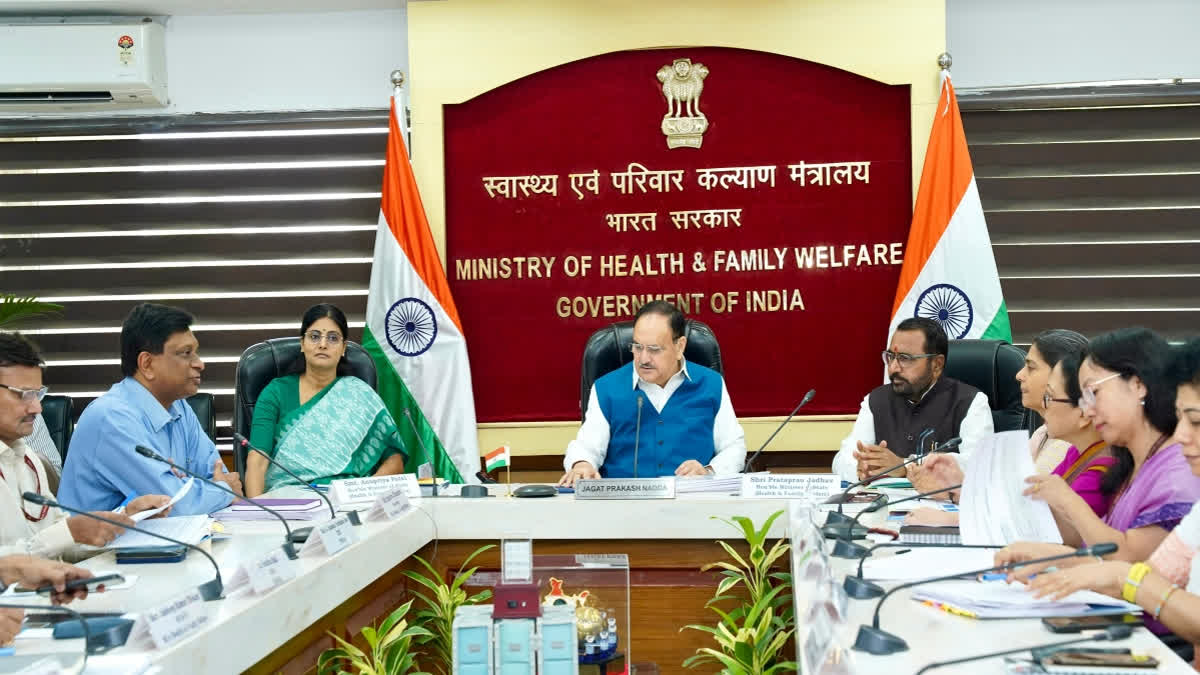New Delhi: The Union Health Ministry has asked Gujarat, Madhya Pradesh, and Rajasthan to be on alert in view of the outbreak of the Chandipura virus (CHPV).
"The Health Ministry has asked these three States to intensify monitoring and surveillance systems to detect and manage the spread of the virus,” a senior Health Ministry official told ETV Bharat on Friday. Since early June, cases of Acute Encephalitis Syndrome (AES) have been reported in children under 15 years of age in Gujarat.
As of July 20, a total of 78 AES cases have been reported, with 75 from 21 districts, corporations in Gujarat, two from Rajasthan, and one from Madhya Pradesh.
Of these, 28 cases have resulted in death. Among the 76 samples tested at NIV Pune, nine have been confirmed positive for Chandipura Virus (CHPV). All nine CHPV-positive cases and five associated deaths are from Gujarat.
The virus primarily affects children, who are more vulnerable to severe outcomes of the infection. Young children (under 15 years of age) are at a higher risk of developing acute encephalitis, which can lead to serious complications and has a higher mortality rate in this age group.
"The National Centre For Vector-Borne Diseases control under the director general of health service has been keeping a close watch on the development related to Chandipura virus disease," the official said.
Already, a multidisciplinary central team from NCDC, ICMR, and DAHD is being deployed to assist the state government of Gujarat with these investigations. “If necessary, we will send more teams to other states as well,” the official said.
Talking over the development, Dr Tamorish Kole, chair, of the clinical practice committee, of the International Federation for Emergency Medicine (IFEM) said that the disease affects mostly children under 15 years of age and can be present with a febrile illness that may in some cases result in death.
"Chandipura virus, which has been linked to outbreaks in Gujarat, Madhya Pradesh, and Rajasthan, primarily affects these states due to the presence of sandfly vectors (Mosquito and Ticks are also reported to carry it) responsible for its transmission. These regions have experienced multiple outbreaks, likely because of climatic and ecological conditions that favour the proliferation of sandflies. Furthermore, the historical concentration of epidemiological studies and improved surveillance in these areas has led to higher detection and reporting rates," Dr Kole told ETV Bharat.
The presence of suitable vectors in other regions of India means that similar outbreaks could potentially occur elsewhere under favourable conditions. "Continuous monitoring and surveillance are crucial to detect and manage any future outbreaks in other parts of the country," Dr Kole said.
Chandipura Virus (CHPV) is a member of the Rhabdoviridae family known to cause sporadic cases and outbreaks in the western, central, and southern parts of the country, especially during the Monsoon season. It is transmitted by vectors such as sand flies and ticks.
"Although there is no specific treatment available for CHPV and management is symptomatic, timely referral of suspected AES cases to designated facilities can improve outcomes,” Dr Kole said. According to Dr Kole, it is a serious health concern due to its potential severity and high mortality rate (more than 50 per cent), particularly among children.
"The virus can cause acute encephalitis, leading to symptoms such as high fever, seizures, and altered consciousness, which can progress rapidly and become life-threatening. Mortality rates in reported outbreaks have been alarmingly high, making it a deadly infection," he said.
In India, the Chandipura virus is a significant concern. Outbreaks in specific states underscore the necessity for robust public health measures, such as effective vector control, improved surveillance, and swift medical intervention to alleviate the virus's impact. "Continued research and public health efforts are essential to gain a deeper understanding of the virus, prevent its spread, and safeguard vulnerable populations (Children)," Dr Kole said.



